The level of quarterback play in the NFL is better than ever. While a few of the more established old guard QBs continue their great successes, the league has given rise to a promising new wave of young passers, some who also possess rare athletic traits.
The intersection of these quarterbacks created a big offensive boom in 2020. Somehow, the potential of the projected starters for every team in 2021 is greater, thanks to a slew of top second-year and rookie draft picks.
Weighing past recent peformances but tilting a lot more toward upside for the upcoming season, here’s Sporting News’ latest annual offseason ranking of NFL quarterbacks, 1-32:
MORE NFL RANKINGS: RBs | WRs | GMs | Head coaches
NFL quarterback rankings 2021
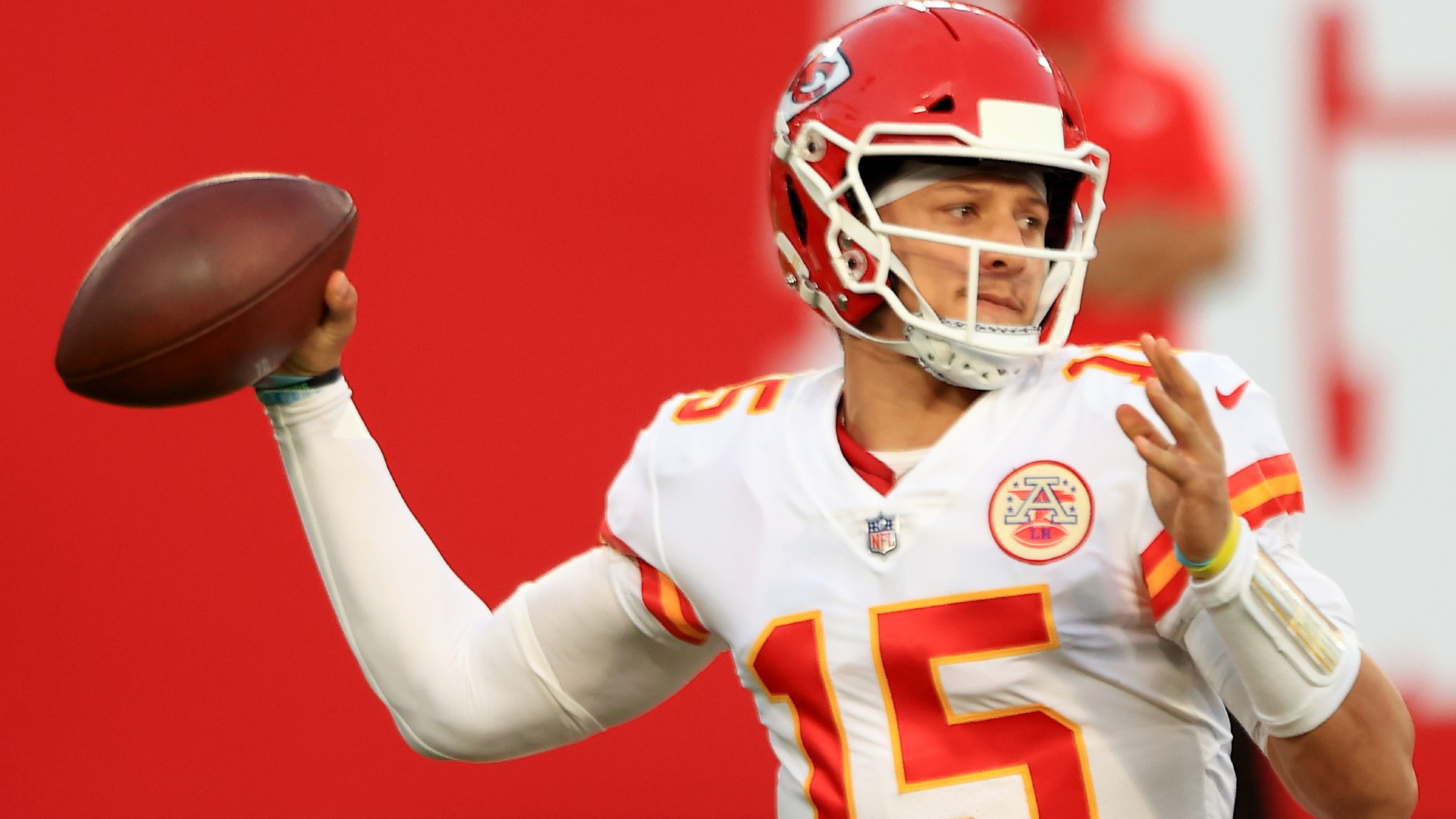
1. Patrick Mahomes, Chiefs
Mahomes is king again at age 25 and may not be dethroned for a long time. He does the razzle dazzle better than any quarterback, but he does all the little things well, too, with his big arm as the foundation. The money magician also hasn’t quite hit his ceiling, despite already having a historically prolific MVP season and Super Bowl MVP on his resume. Mahomes has full command of his familiar supporting cast and offensive system under Andy Reid.
2020 key stats: 4,740 passing yards, 38 passing TDs, 6 INTs, 108.2 passer rating, 82.9 QBR, 8.1 yards per attempt, 308 rushing yards, 2 rushing TDs
2. Aaron Rodgers, Packers
The reigning MVP has proved to be the NFL’s ultimate renaissance man at the position, given his offseason “Jeopardy!” guest-hosting and “The Match” golfing prowess. Wherever his future lies beyond 2021, Rodgers’ physical skills are in peak condition with several more elite seasons ahead of him. At 37, his wisdom and intelligence remain major assets, rebooted by a QB-friendly offense operated by Matt LaFleur. Rodgers’ arm is still an absolute cannon, too, with the accuracy to put the ball anywhere downfield.
2020 key stats: 4,299 passing yards, 48 passing TDs, 5 INTs, 121.5 passer rating, 84.4 QBR, 8.2 yards per attempt, 149 rushing yards, 3 rushing TDs
MORE: 5 things the packers can do to keep Aaron Rodgers past 2021
3. Tom Brady, Buccaneers
Brady bet on himself at age 43 outside of New England and immediately reached past Super Bowl glory in Tampa Bay. He chose a team with a great supporting cast, including the offensive skill players, line, running game and defense. He put his own Patriots spin on the Buccaneers aggressive downfield passing game with Bruce Arians and Byron Leftwich. The result was his best season since his 2017 MVP campaign. Brady helped reshape the Bucs and was a big part of keeping the gang together for a strong shot at a repeat.
2020 key stats: 4,633 passing yards, 40 passing TDs, 12 INTs, 102.2 passer rating, 72.5 QBR, 7.6 yards per attempt
4. Josh Allen, Bills
Brady’s departure from the AFC East opened the door for a new passer to be the unquestioned class of the division. Allen left little doubt with his remarkable age-25 third season. He has put all his immense physical skills together, converting his arm and athleticism into a force capable of taking over games. He also has shown the necessary young leadership to maintain Buffalo’s new status as a playoff power. He is a strong MVP candidate in 2021.
2020 key stats: 4,544 passing yards, 37 passing TDs, 10 INTs, 107.2 passer rating, 81.7 QBR, 7.8 yards per attempt, 421 rushing yards, 8 rushing TDs

5. Deshaun Watson, Texans
Until there’s some kind of clarity on Watson’s on-field future tied to the concerning off-field developments, he takes his worthy high spot on the list. Despite the team in Houston falling apart around him with now limited talent, familiar or otherwise, Watson has done everything he can with his incredible individual play to prop it up offensively. He is a high-reward passer with low risk in pushing for big plays downfield while remaining efficient. He also is an explosive runner whenever things break down too much.
2020 key stats: 4,823 passing yards, 33 passing TDs, 7 INTs, 112.4 passer rating, 70.5 QBR, 8.9 yards per attempt, 444 rushing yards, 3 rushing TDs
6. Russell Wilson, Seahawks
Wilson started last season on a MVP-like tear with a dominant first half before fading a bit in the final two months. He set career highs for complete percentage and TDs, but there was a slip in his usual high-caliber deep passing. Although the big sack totals keep on coming, he remains the league’s most durable QB with strong rushing efficiency. The playoff clunker against the Rams shouldn’t take away from the fact his floor is higher than the ceiling of most QBs. He should be helped by a necessary QB-friendly coordinator change.
2020 key stats: 4,212 passing yards, 40 passing TDs, 13 INTs, 105.1 passer rating, 73.5 QBR, 7.5 yards per attempt, 513 rushing yards, 2 rushing TDs
7. Dak Prescott, Cowboys
Prescott was headed toward a massive first season with Kellen Moore and Mike McCarthy before the heartbreaking ankle injury against the Giants in the fifth game. He was laser-focused with an elite trio of wide receivers while in complete command of getting the ball deep with his cannon. He is expected to be back at full strength and much of the Cowboys’ success in 2021 will ride on his arm and legs. With big contract now in hand at 27, expect him to work hard to earn every bit of it to try to work his way into the top five QBs.
2020 key stats: 1,856 passing yards, 9 passing TDs, 4 INTs, 99.6 passer rating, 78.7 QBR, 8.4 yards per attempt, 93 rushing yards, 3 rushing TDs
8. Lamar Jackson, Ravens
Jackson didn’t live up to his MVP level from 2019, but he also didn’t struggle as much as many perceived. He delivered down the stretch to ensure a Ravens playoff return after not getting the same kind of support in an offense in transition. He remained the game’s most dangerous runner at the position until he found his late groove. Jackson did break through for his first playoff victory and at only 24, should be expected to rev back up as a passer with a receiving corps overhaul to match the improved traditional rushing attack.
2020 key stats: 2,757 passing yards, 26 passing TDs, 9 INTs, 99.3 passer rating, 73.7 QBR, 7.3 yards per attempt, 1,005 rushing yards, 7 rushing TDs
9. Kyler Murray, Cardinals
When comes to special runners at the position, the 23-year-old Murray stands out as much as Jackson with his speed, quickness and elusiveness. He also manages a run-centered spread passing attack well. He needs to get more consistent with his accuracy, especially when taking shots downfield. He also should improve his decision-making with two full years behind him in Kliff Kingsbury’s offense. The 2019 No. 1 overall pick is just getting warmed up for a top-flight career.
2020 key stats: 3,971 passing yards, 26 passing TDs, 12 INTs, 94.3 passer rating, 68.9 QBR, 7.1 yards per attempt, 819 rushing yards, 11 rushing TDs
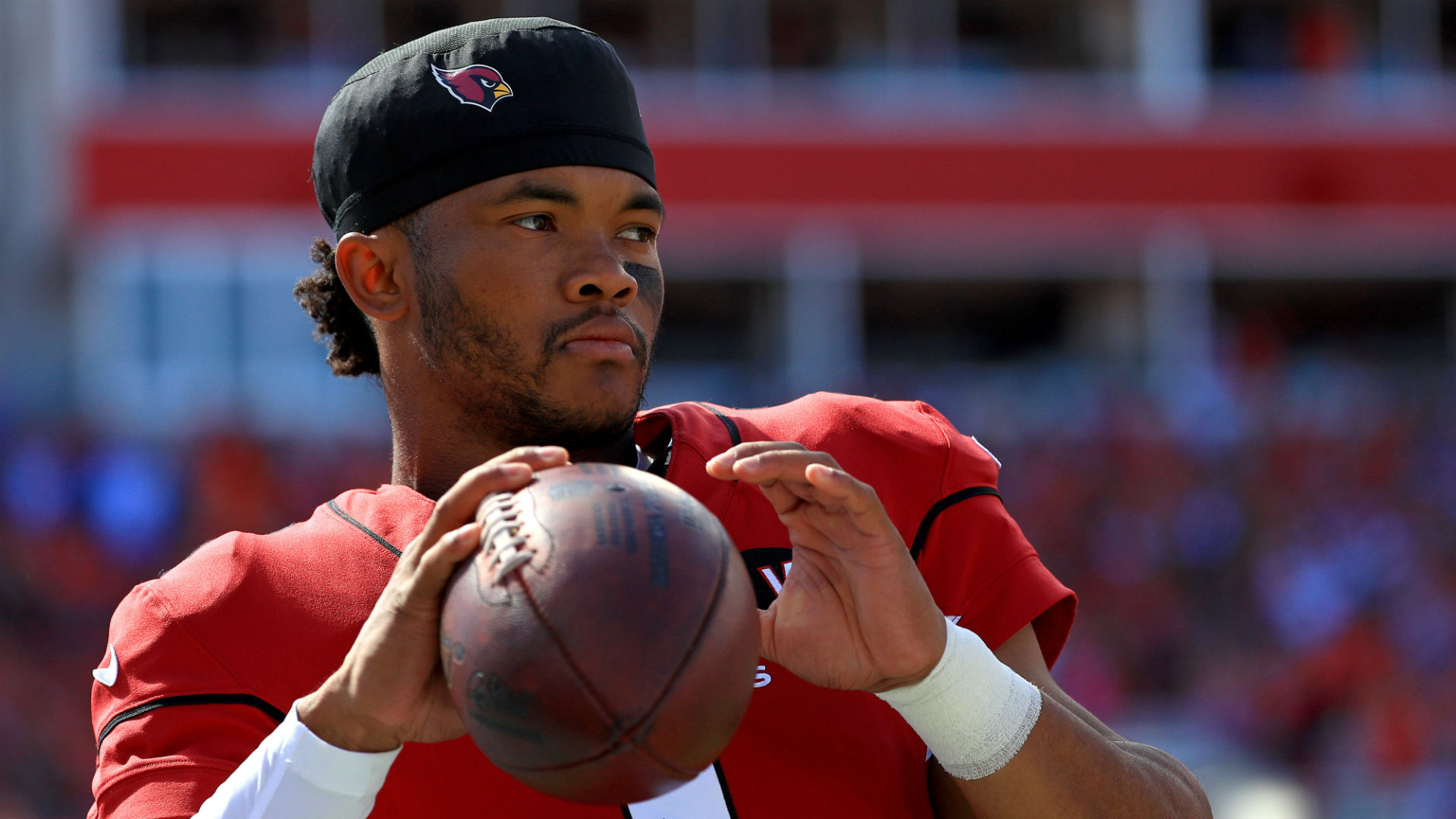
10. Justin Herbert, Chargers
Herbert got an unexpected early opportunity and gave the Chargers no reason for him to relinquish his status. After excelling as a rookie, the expectations are sky high for the 23-year-old in Year 2. The challenge will be adjusting to a brand-new offense and remaining limited with his weapons as defenses adjust better to him. Herbert accelerated his learning curve with his arm, accuracy and athleticism and will do a lot more than avoid a sophomore slump.
2020 key stats: 4,336 passing yards, 39 passing TDs, 10 INTs, 98.3 passer rating, 69.5 QBR, 7.3 yards per attempt, 234 rushing yards, 5 rushing TDs
11. Ryan Tannehill, Titans
Tannehill has found his groove at 32. Tennessee gave him the perfect run-heavy offense for his skill set. Much of Tannehill’s mid-career boom has been tied to play-action passing, but he’s reminded many that his arm remains underrated and his athleticism is a major asset. He plays with youthful joy and confidence that he didn’t have with the Dolphins. He’s also been durable and grown as a leader. Tannehill has become as fun to watch as many similar young guns.
2020 key stats: 3,819 passing yards, 33 passing TDs, 7 INTs, 106.5 passer rating, 78.3 QBR, 7.9 yards per attempt, 266 rushing yards, 7 rushing TDs
12. Joe Burrow, Bengals
Burrow had a careful rookie season operating in Cincinnati’s offense, curbed by his knee injury. He should be recovered for a big age 24 season that lives up to his status as a second-year No. 1 overall pick. Burrow relied plenty on throwing the ball into the middle of the field. That will change as he’s more unleashed under Zac Taylor, knowing that he’s reunited with all-around go-to guy Ja’Marr Chase. Look for Burrow to raise his efficiency and big-play quotient at the same time. He also is underrated as an athlete and runner.
2020 key stats: 2,688 passing yards, 13 passing TDs, 5 INTs, 89.8 passer rating, 56.2 QBR, 6.7 yards per attempt, 142 rushing yards, 3 rushing TDs
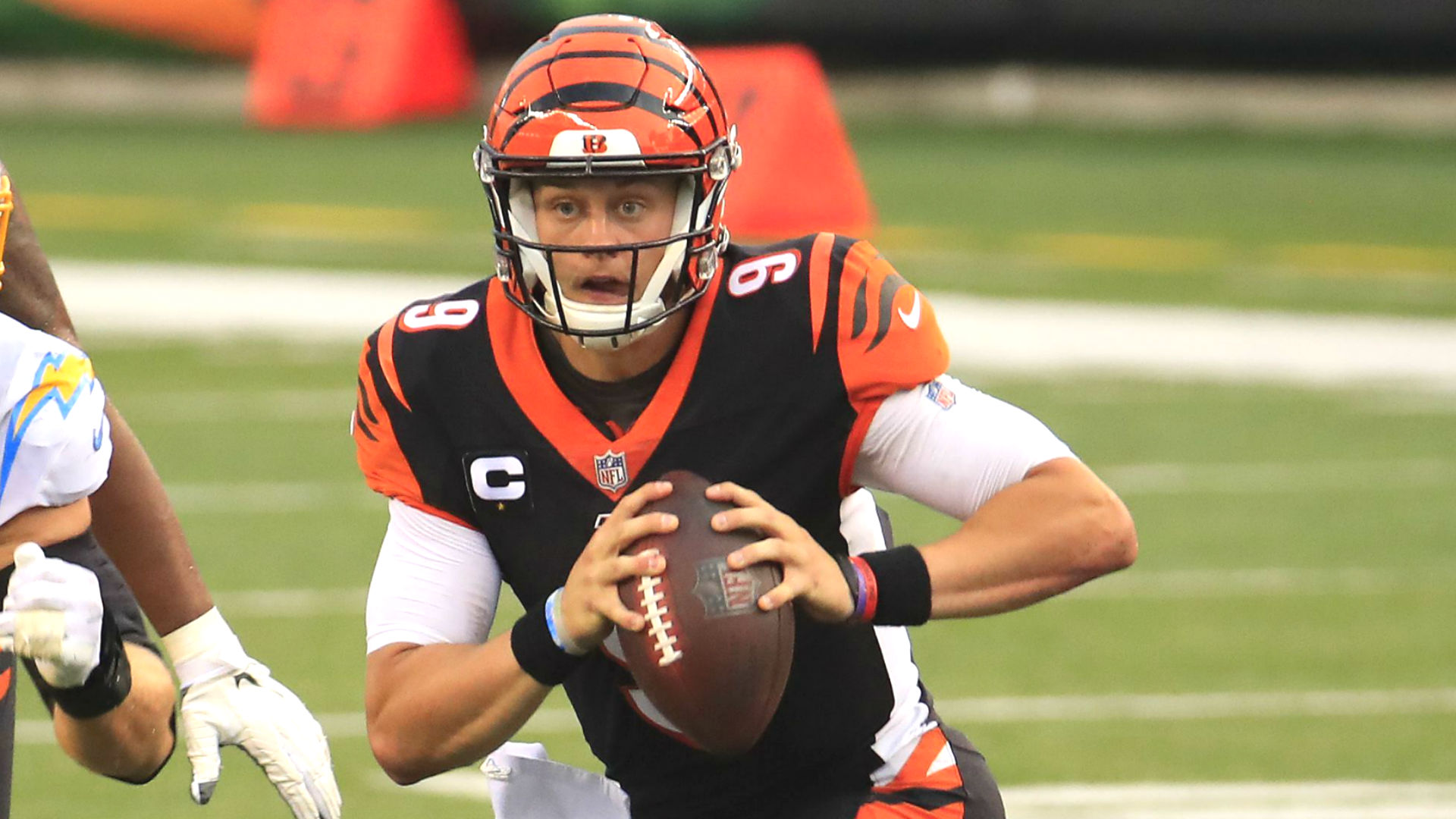
13. Baker Mayfield, Browns
The 26-year-old, the No. 1 overall pick in 2018, got back on track in Year 3 thanks to some of the same offensive concepts that have helped Tannehill and the QB with whom offensive-minded coach Kevin Stefanski worked before Mayfield, Kirk Cousins. Cleveland installed a more QB-friendly run-heavy attack, facilitating Mayfield’s play via play-action and bootlegs. He didn’t force the ball downfield and played off the run by spreading it around better. Now that the mistakes are under control, Mayfield can be counted on for more big plays with the best, healthiest, deepest receiving corps he’s ever had. It also helps to have pristine pass protection and two top backs.
2020 key stats: 3,563 passing yards, 26 passing TDs, 8 INTs, 95.9 passer rating, 72.2 QBR, 7.3 yards per attempt
14. Kirk Cousins, Vikings
At 32, Cousins has had enjoyed the best play of his career in Minnesota, a la Tannehill in Tennessee. The Vikings have simplified things in the offense with running back Dalvin Cook as the centerpiece and Cousins having two exceptional, versatile receivers in Justin Jefferson and Adam Thielen. The use of 12 personnel (two tight ends) has vibed with him to help Cousins maximize his big arm. His deep passing has been on point, but the decision-making and accuracy still let him down at key points.
2020 key stats: 4,265 passing yards, 35 passing TDs, 13 INTs, 105.0 passer rating, 63.2 QBR, 8.3 yards per attempt
15. Matthew Stafford, Rams
Stafford, the 2009 No. 1 overall pick, is changing teams for the first time in his age 33 season. There’s been a ton of hype over what he can do in Sean McVay’s offense, but that’s discounting for the recent impressive highs in Detroit. The arm is still there but he’s been inconsistent no matter the volume. There’s also been regression to the mean in terms of his fourth-quarter play and he’s still looking for his first playoff win. There’s a perception the Lions didn’t give him much passing help and he will be transformative with his new team, but the reality is there’s enough sample size to know one already has seen the best of him.
2020 key stats (with Lions): 4,084 passing yards, 26 passing TDs, 10 INTs, 96.3 passer rating, 68.4 QBR, 7.7 yards per attempt
16. Matt Ryan, Falcons
The 2016 NFL MVP, a good friend of Stafford’s, has remained on a roller-coaster with his offensive systems. At 36, Ryan is now adjusting to the scheme of offensive-minded head coach Arthur Smith and latest new coordinator, Dave Ragone. Ryan has been in a rut with the passing game, so a focus on the running game and turning the page from Julio Jones to make Calvin Ridley and rookie tight end Kyle Pitts his go-to guys is a welcome rejuvenation plan. Ryan may not have long left at the helm of Atlanta, but he is set up for one more career bounce-back.
2020 key stats: 4,581 passing yards, 26 passing TDs, 11 INTs, 93.3 passer rating, 67.0 QBR, 7.3 yards per attempt
17. Derek Carr, Raiders
Carr is a difficult QB to evaluate. Following the thinking of his offensive-minded coach, Jon Gruden, there is something missing with Carr, even though the numbers seem complete. The Raiders help him with an approach centered around the running game. Carr takes advantage by being effective pocket passing on short-to-intermediate routes with tight end Darren Waller as the focal point. Although he’s gotten better with big plays, the limited downfield game is what keeps Carr in the dependable vs. luxury category.
2020 key stats: 4,103 passing yards, 27 passing TDs, 9 INTs, 101.4 passer rating, 71.0 QBR, 7.9 yards per attempt
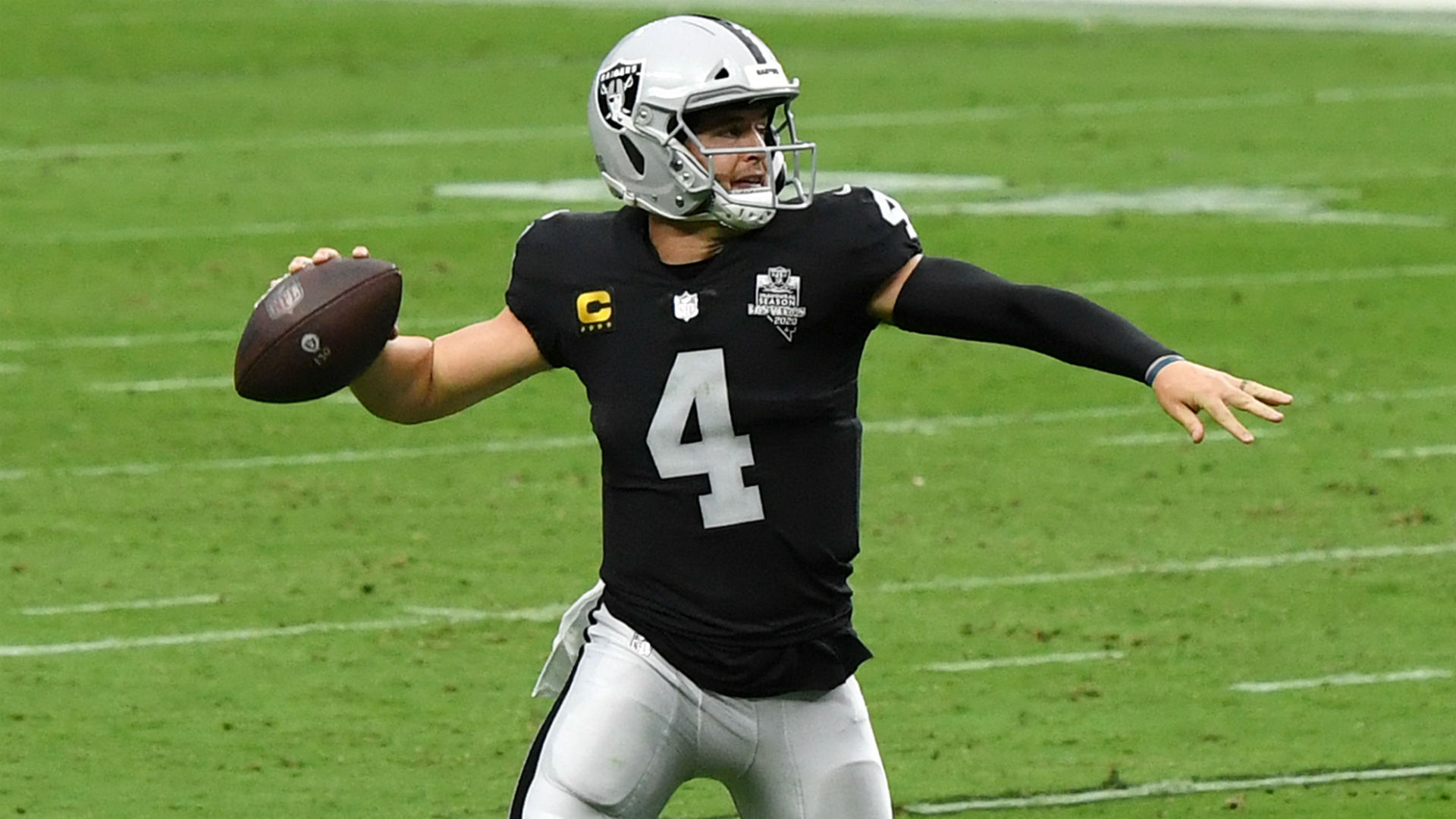
18. Ben Roethlisberger, Steelers
Roethlisberger’s arm strength looked shot last season with his air-yard deterioration turning him into a dinker and dunker coming off a 2019 season lost to a right elbow injury. He can fight off Father Time for only so long at age 39. He still managed to be a rather efficient distributor, thanks to having a trio of special young receivers in Diontae Johnson, Chase Claypool and JuJu Smith-Schuster. But there’s a reason why Pittsburgh made it a point to be more run-centric featuring first-round rookie Najee Harris. Roethlisberger has transitioned from lifting the offense to being a more dependent older QB.
2020 key stats: 3,803 passing yards, 33 passing TDs, 10 INTs, 94.1 passer rating, 60.1 QBR, 6.3 yards per attempt
19. Trevor Lawrence, Jaguars
Lawrence is the latest No. 1 overall pick to be tagged with the “can’t miss” label. The 21-year old did everything he could to shine as a future NFL superstar at Clemson except for winning the Heisman Trophy. Touted as the best QB prospect since John Elway for a long time, Lawrence’s physical tools are off the charts, the modern prototype with his size, arm, accuracy and athleticism. He blends a lot of the special attributes fellow young guns Herbert and Burrow possess. The Jaguars have enough blocking and skill support to allow Lawrence to enjoy an immediate spike hinting at his major promise.
2020 key stats (at Clemson): 3,153 passing yards, 24 passing TDs, 5 INTs, 9.4 yards per attempt, 203 rushing yards, 8 rushing TDs
20. Carson Wentz, Colts
Durability issues caught up with Wentz in Philadelphia on top of trying to do too much and force things that weren’t there in the offense. He developed a tendency to hold the ball too long, which led to an NFL-high 50 sacks in only 12 starts last season before being benched for Jalen Hurts. Wentz was saved a little by his athleticism but 2020 was rough by every passing measure. He will start his Colts career sidelined with another injury, his debut up in the air pending recovery from foot surgery. But at only 28, there’s plenty of time to get right again and the Colts’ run-heavy offense behind a sturdy line will boost him. He’s also back with the offensive-minded head coach Frank Reich who was critical to his early success with the Eagles. Look for Wentz, when back healthy, to be whispered well the way Mayfield and Tannehill were.
2020 key stats (with Eagles): 2,620 passing yards, 16 passing TDs, 15 INTs, 72.8 passer rating, 49.6 QBR, 6.0 yards per attempt, 276 rushing yards, 5 rushing TDs
MORE: Exploring the Colts’ best Carson Wentz injury replacements
21. Jalen Hurts, Eagles
Hurts, only 22, showed the Eagles enough as a rookie second-rounder to compel them to move on from Wentz and his big contract. In only four starts, Hurts displayed all of his rare running ability and some good passing upside despite limited weapons and protection. Reuniting with rookie first-round wide receiver DeVonta Smith helps, along with better health up front. New offensive-minded head coach Nick Sirianni will improve the balance with the rushing attack to make the system more QB-friendly for Hurts’ dual threat. Wentz vs. Hurts with the related Colts twist will be a storyline in Philadelphia.
2020 key stats: 1,061 passing yards, 6 passing TDs, 4 INTs, 77.6 passer rating, 41.0 QBR, 7.2 yards per attempt, 354 rushing yards, 3 rushing TDs
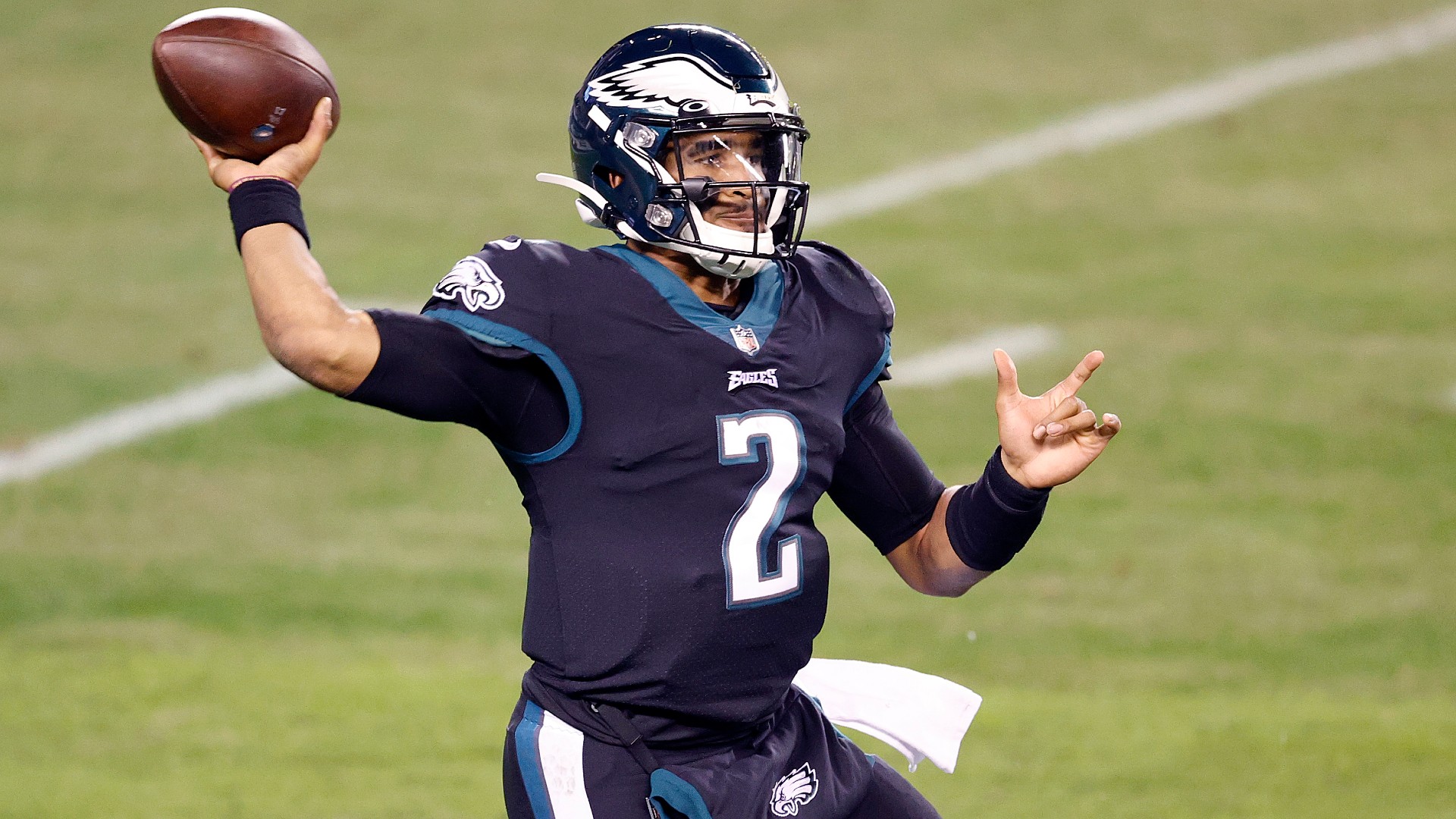
22. Jimmy Garoppolo, 49ers
Jimmy G’s time in San Francisco has had some great moments, including helping to take a high-level all-around offense to the Super Bowl. But as well as he’s performed in a great system, there are two reasons for replacing him with rookie first-rounder Trey Lance sometime soon. First, Garoppolo has had a lot of issues staying healthy. Second, there are some outside-the-box plays he leaves on the table. Garoppolo has a high floor but has shown to Kyle Shanahan he has a clear limited ceiling as a pocket passer. Garoppolo can be effective again for a third team so he must flash his best again at 29 before passing over the job to Lance.
2020 key stats: 1,096 passing yards, 7 passing TDs, 5 INTs, 92.4 passer rating, 61.5 QBR, 7.8 yards per attempt
23. Ryan Fitzpatrick, Washington
The 38-year-old is playing for his ninth NFL team in 2021. He’s made a living as the ultimate bridge quarterback because of his consistent veteran leadership even with unfamiliar teammates and ability to excute in a variety of schemes. That’s exactly what one would expect from a Harvard man, regardless of professional field. He provided more of that old Fitzmagic in Miami and serves a solid solution for the good support from Washington. The streakiness and inconsistency will remain as they always do, but in terms of getting the best out of himself and the offense, Fitzpatrick fits whats the Football Team needs for stability in 2021.
2020 key stats (with Dolphins): 2,091 passing yards, 13 passing TDs, 8 INTs, 95.6 passer rating, 76.9 QBR, 7.8 yards per attempt
24. Daniel Jones, Giants
This is an unquestioned make-or-break third season for the No. 6 overall pick in 2019. Jones has flashed, more so as a rookie than as a slumping sophomore. But at 24, he needs to show the Giants he’s a long-term keeper. They boosted the receiving corps with Kenny Golladay, rookie first-rounder Kadarius Toney and savvy second tight end Kyle Rudolph. Saquon Barkley also will be back to flank Jones in the backfield behind an improved line. Jones has the smarts and athleticism to put it all together and break out, but the limited success in a small sample size makes the 2021 campaign more of a wild card. Don’t be surprised with either a big postiive or big negative result.
2020 key stats: 2,943 passing yards, 11 passing TDs, 10 INTs, 80.4 passer rating, 61.5 QBR, 6.6 yards per attempt, 423 rushing yards, rushing TD

25. Jared Goff, Lions
McVay and the Rams squeezed everything they could from the No. 1 overall pick in 2016, boosting him with a strong system and supporting cast. Now Goff is at a career crossroads, hoping to serve the Lions as more than a 26-year-old bridge option. Goff has regressed with his efficiency and downfield passing since his first two years with McVay. He is hoping to be fixed by another Los Angeles import, offensive coordinator Anthony Lynn, who was a big help to Herbert last season. The Lions will lean a lot on the run with D’Andre Swift, but they unfortunately depleted their passing game options save for top young tight end T.J. Hockenson. This situation has the feel of Goff taking more lumps and making room for a rookie replacement in 2022.
2020 key stats (with Rams): 3,952 passing yards, 20 passing TDs, 13 INTs, 90.0 passer rating, 58.5 QBR, 7.2 yards per attempt
26. Jameis Winston, Saints
Winston said he learned a ton learning behind now retired all-time great Drew Brees in Sean Payton’s system. After the prolific passing for the rival Buccaneers marred by big interception woes, Winston was smart to be patient and reboot as a backup to work on improving his efficiency to go with big, aggressive arm. Betting on himself should pay off, as he should win the Saints’ starting job over non-traditional passer Taysom Hill. Winston will operate with a good line, a top wide receiver in Michael Thomas, the ultimate dumpoff option in Alvin Kamara and a rising tight end, Adam Trautman. Only 27, Winston is another wild card worth watching as a high-upside reclamation passer.
27. Tua Tagovailoa, Dolphins
The Dolphins didn’t throw Tagovailoa into the water as a rookie and the result was not much of a splash. They should let him swim further from shore after not allowing him to pass much without a life vest. Getting two more key weapons in former Texan Will Fuller and 2020 first-rounder Jaylen Waddle — a big target from his Alabama days – indicates Tagovailoa will be let loose as a passer in a less compressed attack. But this feels like his true rookie season, operating in his second new offense in as many years with two coordinators. With the quick rise of Herbert and Burrow, there will be a lot of pressure for Tagovailoa to come through for a returning 10-6 team. At 23, Tua is bound to take more lumps, setting up a Jones-like crucial Year 3.
2020 key stats: 1,814 passing yards, 11 passing TDs, 5 INTs, 87.1 passer rating, 52.5 QBR, 6.3 yards per attempt, 109 rushing yards, 3 rushing TDs
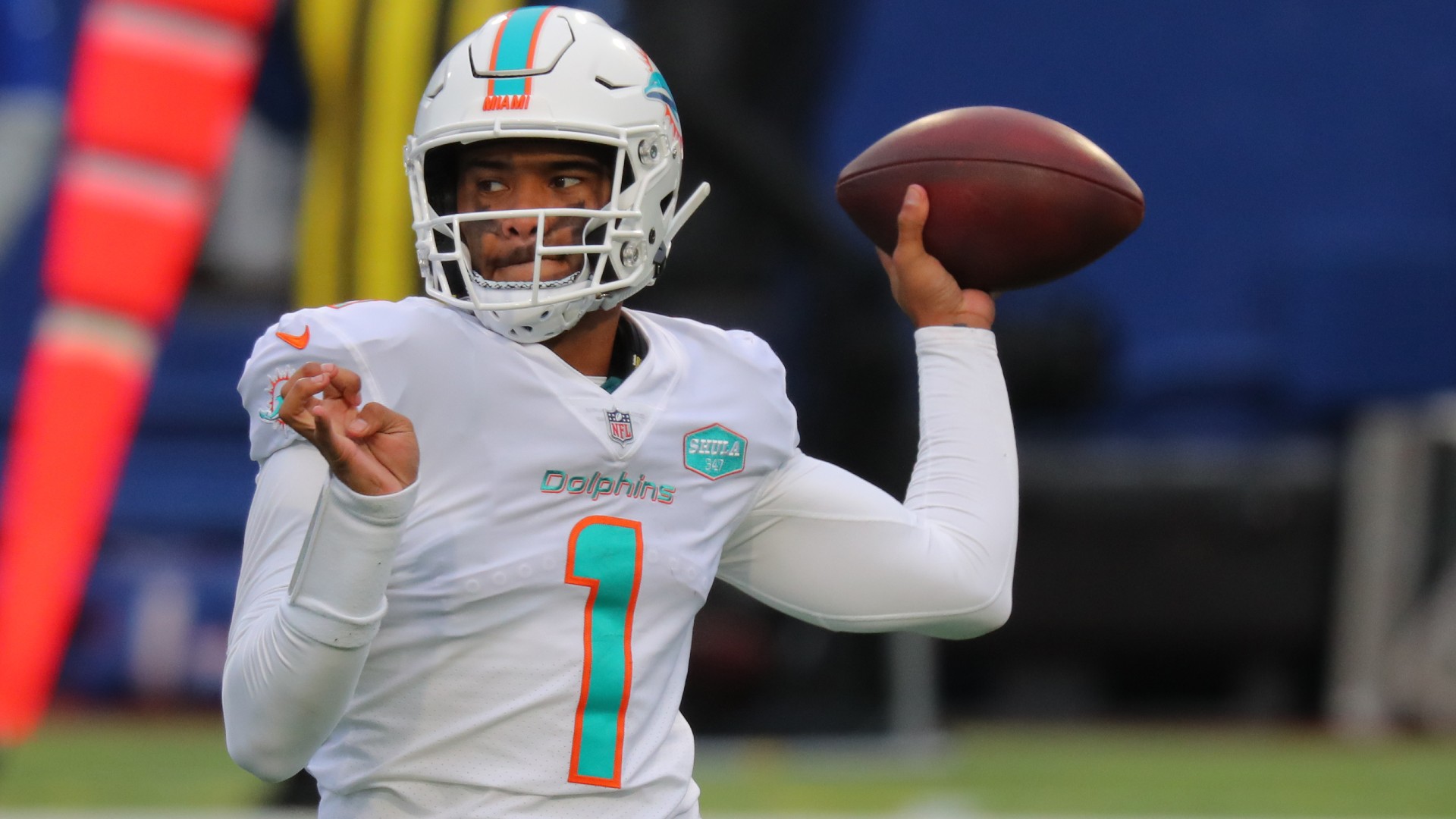
28. Zach Wilson, Jets
Wilson had an amazing final college season as a passer and runner that propelled him into No. 2 overall pick status behind Lawrence. He also has the personality to handle the pressure that comes with trying to be the latest Jets savior at the game’s most important position. Beyond the makeup, Wilson also enters a great system with rising offensive mind Mike LaFleur. The Jets have invested plenty in the line and receiving corps. They also will use zone blocking to give a much-needed jolt to the rushing attack. Wilson has the skill set to be a rookie revelation in Herbert’s vein. For now, physical gifts aside, here’s a conservative ranking based on Wilson’s inexperience and learning challenges.
2020 key stats (at BYU): 3,692 passing yards, 33 passing TDs, 3 INTs, 11.0 yards per attempt, 254 rushing yards, 10 rushing TDs
29. Cam Newton, Patriots
Newton was supposed to be the ultimate passing and running cog for Bill Belichick and Josh McDaniels. Unfortunately, his late offseason arrival in 2020 combined with a coronavirus-related in-season continuity issue derailed the chances to fully absorb the system. Newton’s worth to the Patriots came from acting like an extra big power back in the rushing attack. He wasn’t helped by line concerns, receiving personnel issues and running back health either. Newton should have a better grasp of New England wants to do with him at the helm, but now it’s as a different-style bridge QB for rookie first-rounder Mac Jones. Past wear and tear has added up for Newton at 32. This feels like his last gasp as a starter.
2020 key stats: 2,657 passing yards, 8 passing TDs, 10 INTs, 82.9 passer rating, 47.0 QBR, 7.2 yards per attempt, 592 rushing yards, 12 rushing TDs
30. Andy Dalton, Bears
The 33-year-old made a decent transition from long-time Bengals starter to short-term Cowboys backup. Dalton did his best to keep Dallas’ offense going without Dak Prescott, but he just couldn’t get into a good rhythm in a new offense to deliver as a supersub. He’s getting the initial chance to start in Chicago over rookie first-rounder Justin Fields because of familiarity with offensive coordinator Bill Lazor from their days together in Cincinnati. Matt Nagy seems set on Dalton starting because of experience, but it would surprise no one if there’s a 180 toward Fields right away. Dalton’s best days are behind him to the point he’s only a serviceable bridge.
2020 key stats (with Cowboys): 2,170 passing yards, 14 passing TDs, 8 INTs, 87.3 passer rating, 53.8 QBR, 6.5 yards per attempt
31. Drew Lock, Broncos
Lock didn’t live up to the massive, undeserving hype put around him last season. At 24 in Year 3, Lock has to hold off new bridge option Teddy Bridgewater to keep his job short-term with the Broncos having a future first-round eye on going elsewhere long-term. There were different but more injury issues than his rookie season in 2020 and there was no juice to the passing game after top wide receiver Courtland Sutton went down in Week 1. Lock’s accuracy and decision-making were poor, leading the league with 15 interceptions in only 13 starts while also not impressing in throwing deeper downfield.
2020 key stats: 2,933 passing yards, 16 passing TDs, 15 INTs, 75.4 passer rating, 48.8 QBR, 6.6 yards per attempt, 160 rushing yards, 3 rushing TDs
32. Sam Darnold, Panthers
Darnold, also 24, was an interesting choice to upgrade over Bridgewater as the Panthers eschewed going for a first-round draft replacement. They do have a good environment to resurrect his career with fine skill players, from Christian McCaffrey to former Jets teammate Robby Anderson, under bright offensive coordinator The No. 3 overall pick from 2018 must do plenty after not showing much for the Jets, as limited as they were, for the past three seasons. Darnold has been sloppy with his accuracy and decision-making, a tendency that did show up at times at USC. Darnoled also has struggled to handle any kind of pressure well, whether from a opponent’s pass rush or being in a big spotlight.
2020 key stats (with Jets): 2,208 passing yards, 9 passing TDs, 11 INTs, 72.7 passer rating, 40.1 QBR, 6.1 yards per attempt
